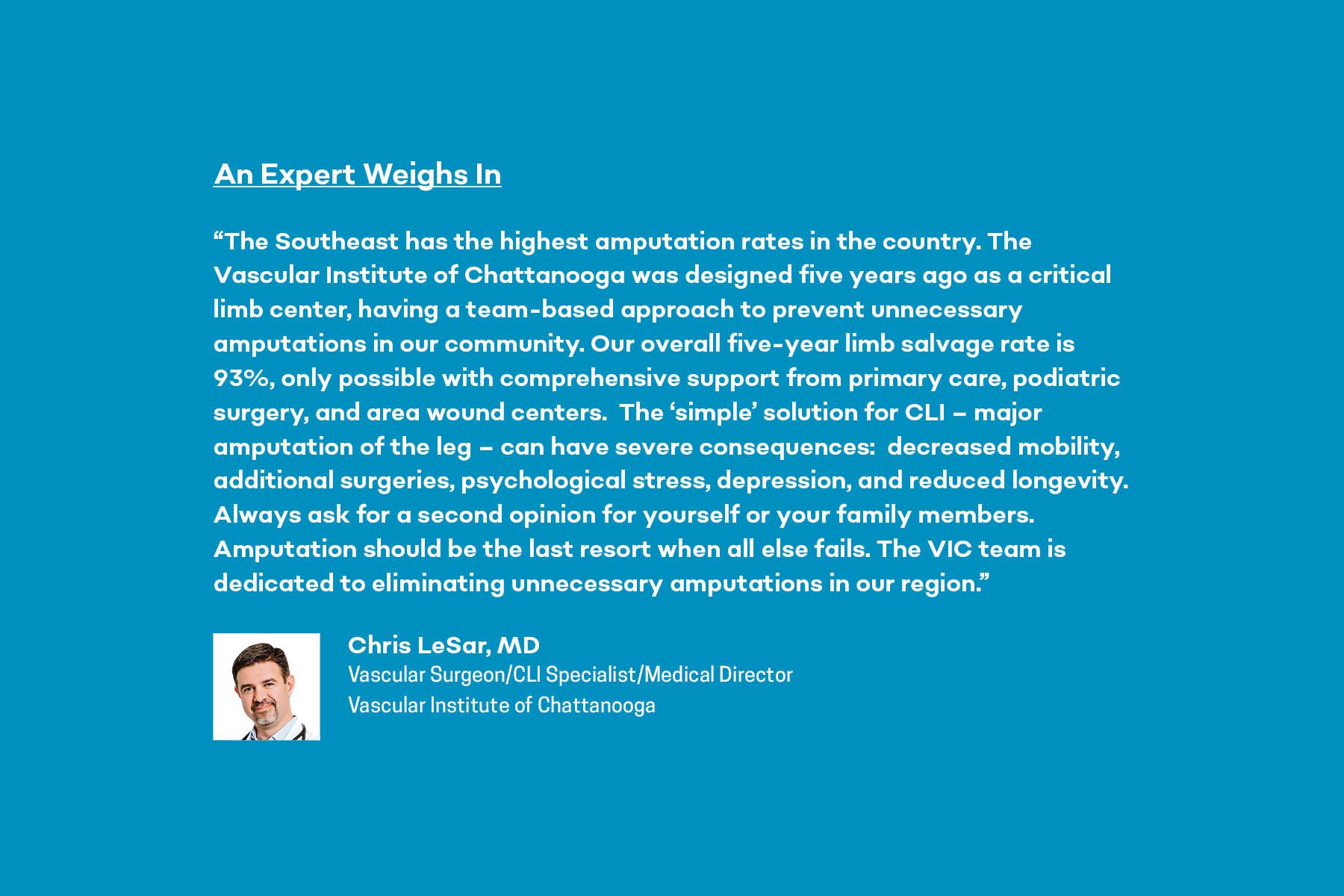Annual Advancements in Medicine Section
From 3D-printing technology in dentistry, to robotic arm assistance in orthopedic surgeries, to anesthetic advances and beyond, new research in the medical field makes for easier procedures for patients and doctors alike. These Chattanooga-based medical professionals share the latest in revolutionary treatment options.
By Lindsey June
Critical limb centers can prevent the need for amputation in patients with peripheral artery disease.
Understanding Critical Limb Ischemia
Critical limb ischemia (CLI) is a major blockage in the arteries of the lower extremities that reduces blood flow. It’s a very serious form of peripheral artery disease (PAD) – a hardening and narrowing of the arteries – that can lead to severe pain in the feet or toes, tissue damage, and skin ulcers. If left untreated, amputation of the affected limb may be required. It is a chronic issue that will not resolve on its own.
Risk factors for CLI include age (men over 60 and women after menopause), diabetes, obesity, smoking, high cholesterol or blood pressure, and a family history of vascular disease. Unfortunately, CLI and PAD are often unrecognized and undiagnosed until it’s too late, and amputation is necessary.
New Solutions
Luckily, there are new preventative methods in place to avoid the need for limb amputation. Patient-centered interventional suites (or critical limb centers) are one option for ongoing vascular care. These suites allow physicians to perform peripheral vascular interventions in an outpatient facility and provide ongoing education, awareness, and care to patients and providers.
What to Expect
Critical limb centers use the triage-to-therapy approach. This means that patients and their families work with highly trained vascular nurse practitioners to maximize overall care. These specialists will collect your health history, address risk factors, and perform diagnostic tests. Advanced endovascular techniques and surgical therapy for limb preservation can help patients with advanced stages of PAD/CLI and reduce the overall need for amputation.
Benefits to Patients
The patient- and family-focused approach to vascular care provided by critical limb centers is highly beneficial for several reasons. Not only does it promote awareness and education for an under-diagnosed condition, but it also makes the experience highly personal. Working with specialists dedicated to vascular care means that the issue is addressed at a micro level, resulting in less amputations and a focus on prolonged amputation-free survival.


